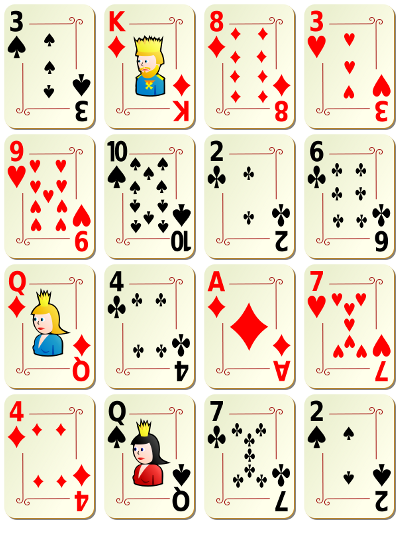
Put your finger on any red card. Move it left or right to the nearest black card. Move it up or down to the nearest red card. Move it diagonally to the nearest black card. Now move it down or to the right to the nearest red card. You’ll always land on the ace of diamonds. (From Harold R. Jacobs, Mathematics: A Human Endeavor, 1970.)
It needs to be a bit more specific on the rules. Does it mean that each move you should end up on a card of the specific colour? Or is it just moving one space in that direction? Do you have to choose the direction to move you closest to said card? Can you choose the direction which didn’t have a card of said colour?
How’s this?1) Put your finger on any red card.2) Move your finger LEFT or RIGHT to the nearest black card.3) Move your finger UP or DOWN to the nearest red card.4) Move your finger DIAGONALLY to the nearest black card.5) Now move your finger DOWN or RIGHT to the nearest red card.You’ll always land on the ace of diamonds. The way the grid is set up means that with those directions, a card of the color in the specified direction should always be closest, which (as far as I can tell), is always exactly one card. The instructions essentially limit out the choices in such a way that you always end on the Ace of Hearts.
Starting on the ace ends up with you on the 4 club, 10 spade, 3 spade, then either king diamond or 9 heart. If it isn’t one card at a time then it works, one card it doesn’t, which is why I asked.
From the AD,left to 4C, (left or right to nearest black),up to KD (up or down to nearest red), diagonally to 2C (diagonally to nearest black),down to AD (down or right to nearest red)
So nearest means move to it rather than move in that direction.
Yes “Move TO the nearest black card”